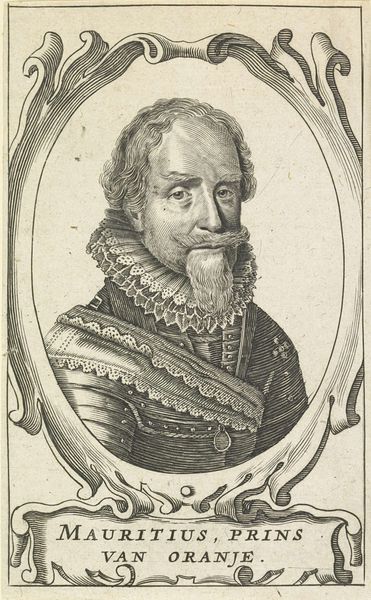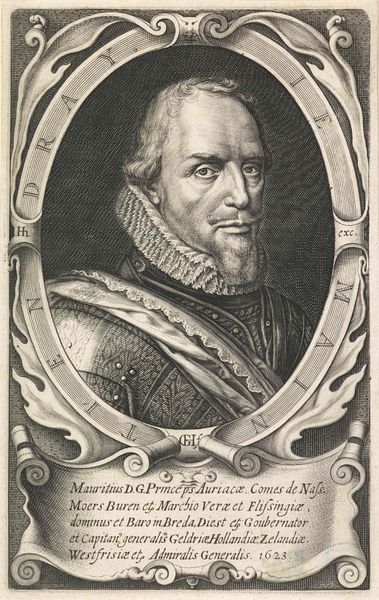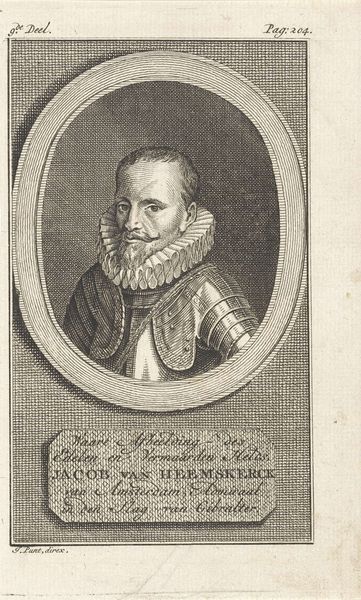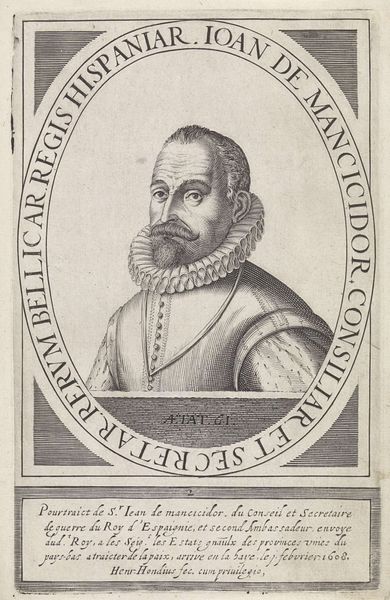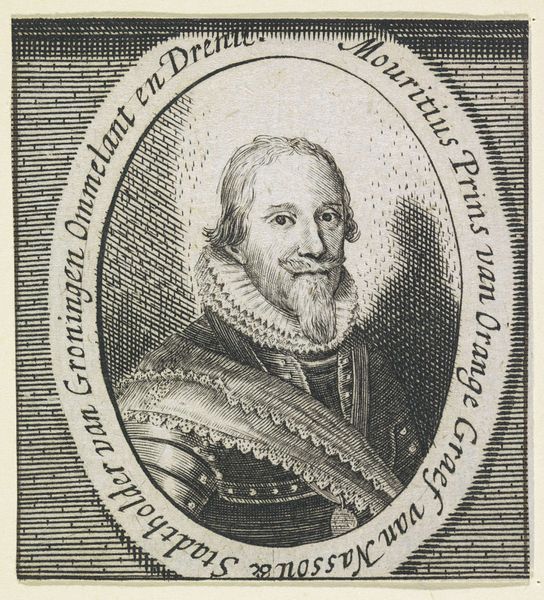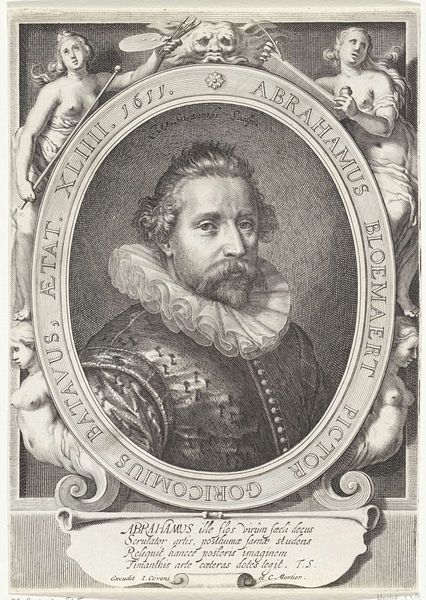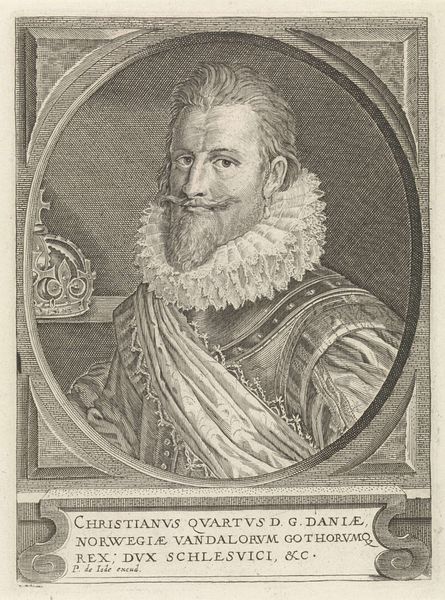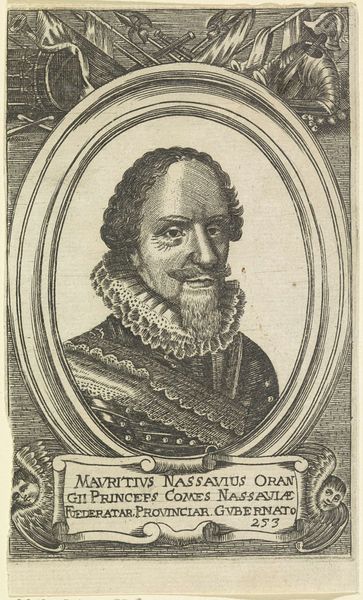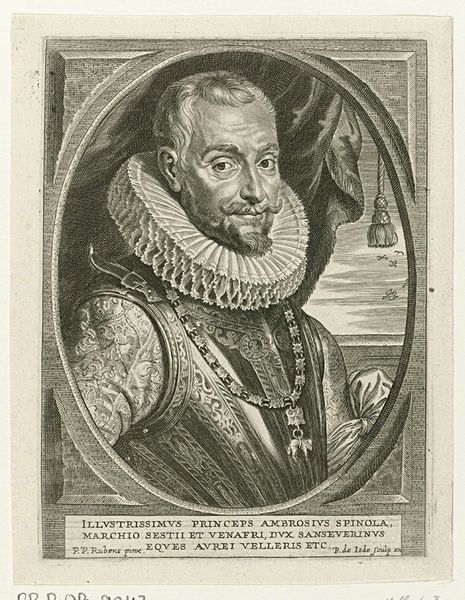
print, engraving
#
portrait
#
baroque
#
dutch-golden-age
# print
#
engraving
Dimensions: height 200 mm, width 162 mm, height 268 mm, width 167 mm
Copyright: Rijks Museum: Open Domain
This engraving from 1619 by Gilles van Couwenberch depicts Lambert Charles, Governor of Nijmegen, framed by an oval border adorned with inscriptions. The ruff collar, a circle of stiffened lace, encloses the face, symbolizing status and formality. This motif is reminiscent of the halo in religious art, repurposed here to denote secular authority. The ruff evolved from smaller, functional neck coverings, yet it transformed into a symbol of aristocratic identity across Europe. As seen in countless portraits of the era, it signifies wealth and adherence to social norms. Consider the psychological implications: the ruff both elevates and constrains, reflecting the burdens and privileges of leadership. The emotional detachment conveyed by the governor’s gaze, combined with the imposing collar, hints at the psychological distance expected of those in power. This symbol's trajectory—from practical garment to emblem of power—echoes the cyclical nature of cultural symbols, constantly re-emerging in new contexts.
Comments
No comments
Be the first to comment and join the conversation on the ultimate creative platform.
